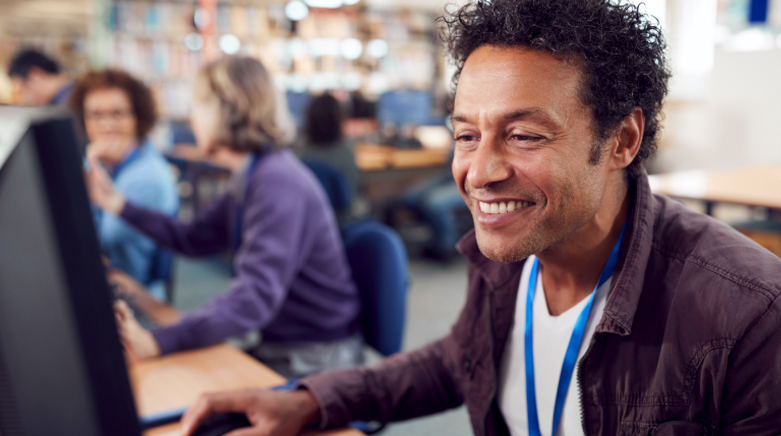Culture Series: Do we really benefit from Diversity in teams?
Many of us are designing and delivering services for a hugely diverse client base. If our teams are one dimensional, how can we be sure we are considering the true impact on our clients?
Article by Social Security
By mhenrichsen | 21 Nov 2023
My name is Julie Mclean, I’m a Deputy Director within the Social Security Programme. I joined the Civil Service from school, and I’ve worked across various Government Departments for the last 30 years.
Throughout that time, I’ve worked with amazing people and learned a great deal from most of them. Reflecting back on my career, I think I’ve learned the most from the people who are not like me; those who have different life experience and different lifestyles but most importantly, people who think differently and challenge me to do the same.
When I was asked to write a blog, I tried to think of something more interesting than the day-to-day challenges of Programme Delivery. People and teams are most often the ones who make a success of the work we do. The make-up of our teams is just as important as the milestones we hit and the benefits we deliver. So, from that perspective, I want to blog about my own personal learning about people and how I recognise the value of having a diverse team around me.
Working in a diverse team can be incredibly powerful. The “lightbulb” conversations I’ve had with colleagues have often taken place in an informal way that happens naturally when working with people.
This all sounds pretty obvious but it can be difficult to achieve. As humans we naturally gravitate to people who behave and act the way we do. We are often drawn to people who will reinforce our thinking, share our values and will agree with us. It creates feelings of safety and harmony.
All of this often results in the opposite of a diverse team. If we’re more comfortable with people who look and think like we do, we tend to recruit in our own image. It’s not unusual to see teams of people who look similar, have similar mannerisms and there is an obvious “group think”. Whilst that makes for a harmonious team, there is lack of challenge, less chance of creativity and very little understanding of people who don’t fit into the same mould.
It can often happen that when we actively try to increase diversity in our teams, we actually create an environment that is diverse “on the surface” – but in reality we have a culture that strongly encourages people to change so they are more like the rest of the team.
True diversity involves actively seeking people who look and think differently and encouraging them to challenge how we do things. Allowing people to bring their own unique qualities to their roles and enabling the team to grow together to make a stronger collective. Over the years, I have learned that a strong team is made up of people who don’t “fit in”; better to bring together people with different skills, experiences and talents and encourage them to be themselves.
We shouldn’t forget that many of us are designing and delivering services for a hugely diverse client base. If our teams are one dimensional, how can we be sure we are considering the true impact on our clients? Obviously, we have user research and testing – but, having people actually working within our teams who are more representative of the community we serve is valuable and by far a more efficient way of working.
So what…
I won’t pretend to be any sort of expert on diversity, instead I’ll borrow a phrase that has stuck with me from one of my conversations about how to be a better diversity ally… “open eyes, open ears, do better – show a better example”. We absorb and learn all of the time, even when we’re not trying to.
I’ll continue to work on building my own understanding of the power of diversity and I’ll try to be brave in asking questions and learning. I’d encourage all of us to look around our teams – is there a sense that we all think the same way? If so, how can we encourage new ideas and challenge?
I’ll finish with a quote from a wonderful writer Maya Angelou – “Do the best you can until you know better. Then when you know better, do better”.
We all need to find a way to “know better”. I look forward to many more conversations that will change my perspective on the things I currently think I know.
Recent posts
-
User Researcher
For me, User Research has always been part of an Agile process. So over the course of a few weeks I’m somewhere in the mix of the above processes. I can be speaking with Operations to source participants for the next round of research and then scheduling with participants.
-
Building a Lessons Learned Culture
While in a project management role in a previous organisation, lessons learned was generally a one-off task at project conclusion. It was not a priority and there was no focussed or consistent approach.
-
Interaction Designer
My role as an interaction designer was part of the design system team, who create static web assets for the Scottish Government and Scottish public bodies. The team is filled with talented interaction designers, user researchers and graphic designers.



